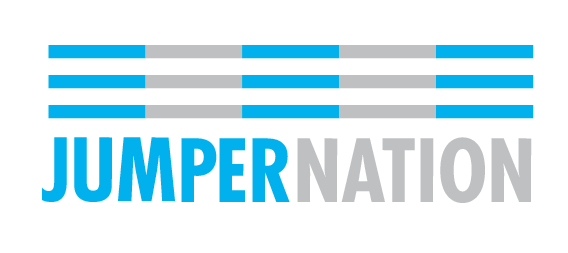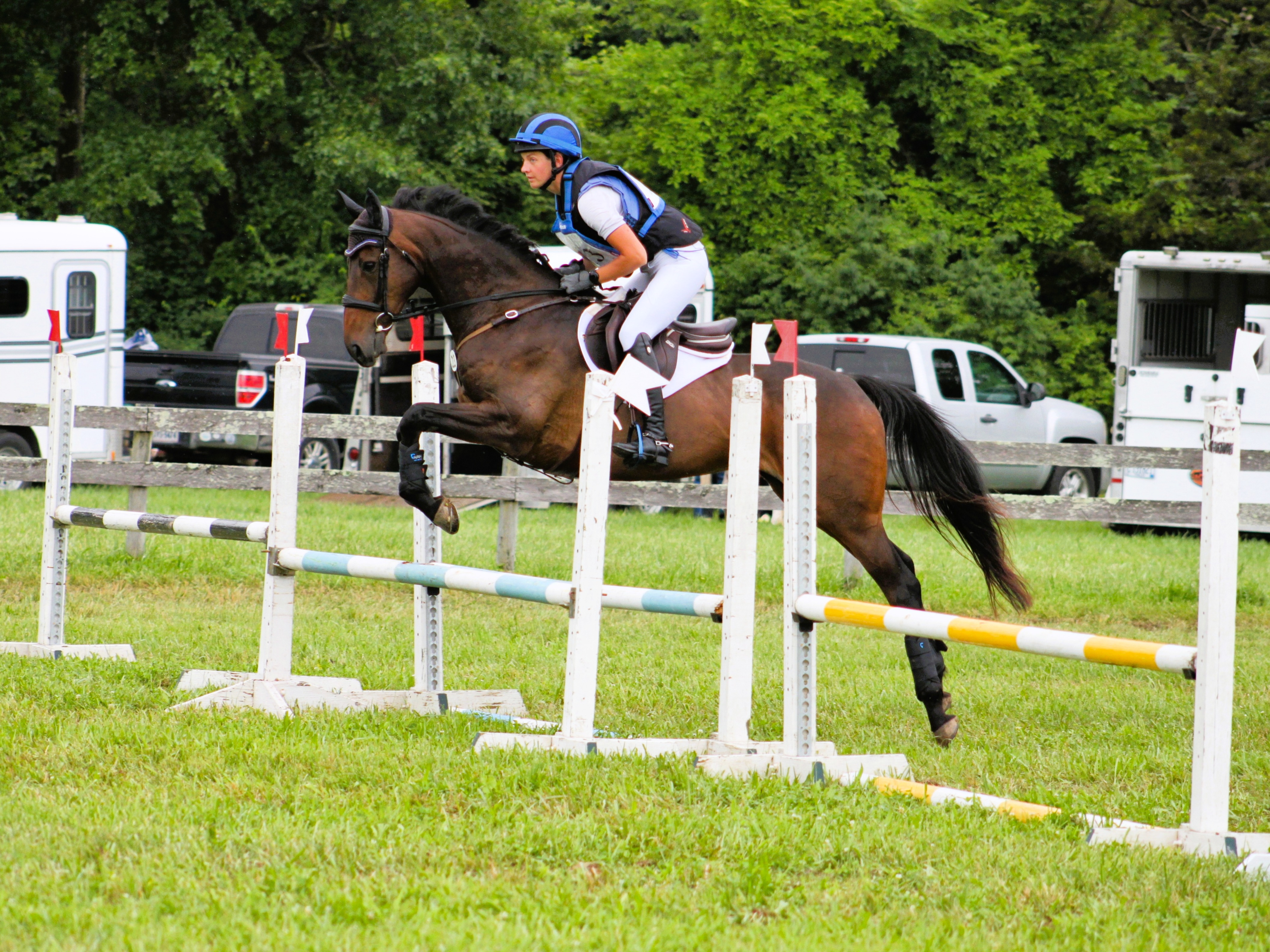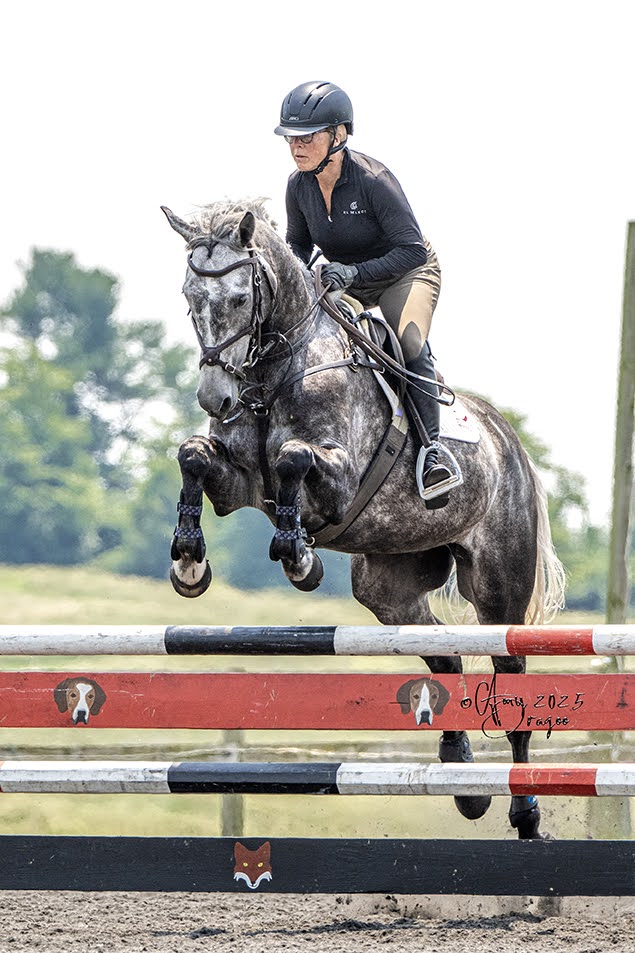The barn is your second home, which means it’s worth the effort to find the right one for you. Jumper Nation blogger Kelly shares some tips for finding a boarding barn/training program that works for your life and your goals.

Photo courtesy of The Hunky Hanoverian.
Finding the right barn for your goals is, in my experience, one of the biggest #adultammyprobs we can have. A lot of adult ammys (including myself) can find this process extremely daunting, and sometimes it’s feels so overwhelming that we choose not to leave a program which we KNOW is not a good fit, and continue to be unhappy.
Fellow ammys, we all need to vow to stop doing this right now! This hobby is way too expensive (in monetary dollars as well as the time it takes and the emotions we pour into it) to stay in a program that doesn’t work for our goals. I’ve moved programs in the hunter/jumper world several times in the past six years, and it took several moves to land on the RIGHT one. I want to share with everyone what I learned in this process because sometimes it’s trial and error until you figure things out. That trial and error process when finding the right barn can be emotionally devastating as well as budget depleting, so I’m here to help you avoid some of the mistakes I’ve made.
GETTING STARTED
Let’s assume you’re unhappy at your current program. No barn is perfect, but if you are regularly unhappy about some aspect(s) that cannot be changed, it’s a pretty good sign you should start thinking about moving and finding the right barn. Where do you even begin? You need to start by being honest with yourself about your riding goals and your absolute must-haves when it comes to a program. What can you absolutely not live without? BE HONEST! Finding the right barn is absolutely about doing some soul searching and being honest with yourself.
You also need to be aware of what your current boarding contract requires. Thirty days notice before moving is common, but every contract is different so read over it once you decide to begin your barn search, so you know what is expected of you. Unfortunately, there are some very toxic situations where you may need to leave right away — in which case you could be on the hook for the last 30 days of board at the old barn and board at a new barn. Double board payment in one month might be awful, but if the safety of your horse and/or your sanity is at stake then I promise you it’s worth it!

Photo courtesy of The Hunky Hanoverian.
ESTABLISH YOUR HARD STOPS
The first step in finding the right barn is identifying your hard stops. A hard stop is something that would cause you not even to consider a program. One of my hard stops is always distance. I am just not willing to spend my life in the car, nor is it feasible for me due to working full time. I am unwilling to only see my horse on weekends, so any program I am in needs to be a workable distance for post-workday visits.
I started my search by identifying barns within an acceptable driving distance. Everyone’s idea of acceptable distance is different, so you need to decide for yourself. My limit was 30 miles one way. I googled like crazy (using local & state association member barn pages predominately) to identify every program that was in my acceptable distance, even including a few that were a tiny bit further out to make sure I wasn’t missing out on barn perfection due to a few miles. I used Google directions, putting my home address and the address of the barns in to see the estimated drive time and mileage to each facility, and put them all on a spreadsheet.
Another hard stop for me was budget. I only make so many dollars, and therefore only have so many to spend. This one is tricky though, and you need to pay close attention. Programs that may seem less expensive up front might feel like a deal, but you need to investigate what is included and what the services you will be using actually cost. A-la-carte style programs can be perfect for some but may end up costing you more if you aren’t careful. Ask lots of questions upfront about ANY potential additional costs. All of a sudden, that “deal” program may not feel like such a deal.

Photo courtesy of The Hunky Hanoverian.
ESTABLISH YOUR NEEDS
One of the things I realized along the way was that I was spending a lot more money then I thought on an a-la-carte program. Once I added it all up, I came to the realization that I had many options in that price range that could potentially be a better fit for me. The price for all-inclusive type programs can seem daunting upfront, but they can actually be a great deal if you are truly using all the services included.
I ended up moving programs a few times because I wasn’t being honest with myself about my needs, which included taking a good look at my goals for Rio and myself. I was bringing along a young hunter for the first time. I needed consistency. I needed a strong and sympathetic trainer with an established track record of bringing along horses and ammy riders. I needed a facility with great footing and lights for the winter months. I needed one that went to A shows since that was my goal with Rio.
I also needed to still get training rides and lessons when the head trainer went to shows. This meant any potential new program would need someone that always stays at home. I needed a program with a reputation for excellent horsemanship. Rio is part of my family, and I need to know that he would always get top-level care and that his needs would always be met. I needed the cost to not be much more then I was already paying, but I also realized that the budget would have to have some wiggle room to realistically fill all of these needs.

Photo courtesy of The Hunky Hanoverian.
CLEARLY LAY OUT YOUR WANTS
Once I established my needs, I considered my wants. All my needs being equal, I didn’t want to be at a mega barn with multiple trainers if it could be avoided since in my experience those always tend to harbor lots of drama. I wanted an established program that wasn’t going to move facilities, or change things every few months. I had already done a good deal of that and found it to be an emotional roller coaster.
I wanted a program that focused on hunters, although I could have lived with one that focused on jumpers and did some hunters. I wanted one that had a good portion of adult riders. I’ve been the only adult surrounded by juniors before, and I found myself missing the camaraderie of fellow ammies. I wanted one where I could use my current vet who I had a great relationship with. I wanted a covered arena. I wanted a program that didn’t place a ton of emphasis on showing, and I didn’t want to be the only client not showing 40 weeks a year. Yes, I wanted to show, but my modest show budget only allows for a handful a year, and I didn’t want to feel pressured to keep up with the Jones’ just to “fit in.”

Photo courtesy of The Hunky Hanoverian.
TIME TO COMPARE & DECIDE
Finding the right barn is a challenge, but it can be done. Once you have established your hard stops, your needs, and your wants, it’s time to compare the programs and see what is the best fit. Try hard not to compromise any of your hard stops. If you were being honest with you when you chose them, you would likely end up unhappy if you compromise on these. Also try hard not to compromise any of your needs. If you absolutely must compromise (some areas just don’t have many options), think long and hard about what you can and can’t live without.
Once you have narrowed it down to a few options, go visit them. Talk to the trainer. Look around the barn. Watch a few lessons if you can. All of that should give you a really good idea of what does and doesn’t seem like a good fit. After all, you aren’t visiting a program that doesn’t meet your basic needs and getting blown away by a fancy arena. You should only be visiting programs that pass your hard stops and as many of your needs as possible. Fancy amenities are nice, but that is ultimately likely not going to make you happy if a program is lacking in some of your other big needs.
In my last and hopefully final move I was finally honest with myself about my hard stops, my needs, and my wants, and I had narrowed down my options to two barns. I visited both, and I talked to trainers at both. I finally made a decision based on one being both a closer drive and having more adult riders. All other aspects were essentially equal. Could I have been happy at that other barn? Likely, yes. Do I feel like the one I chose, in the end, is the right fit? YES, and I have no regrets. Finding the right barn took some time to figure out, but I finally found it, and I hope you do too!
My name is Kelly and I’m a late 20-something who is living the dream of owning a horse as “an adult.” I have officially become the Adult Amateur that I once dreaded as a youth — and I’m loving every horsey moment of it. Over the years I’ve dabbled in most English disciplines, and have firmly landed in hunter land. Now that I am finally living the horse owner dream I chronicle the excitement, disappointment, and general hilarity in my blog.
Follow along with Kelly on her blog The Hunky Hanoverian and on Instagram at @hunky_hanoverian.










































